Remember when our homes were showcases of bold colors, natural materials, and designs that definitely made a statement? The 1970s were a unique time in home decor, when self-expression reigned supreme and the rules of previous decades were tossed right out those macramé-curtained windows. Before minimalism and neutral palettes took over, we embraced patterns, textures, and colors in ways that might make today’s HGTV designers need a moment to collect themselves.
1. Shag Carpeting in Every Shade Imaginable
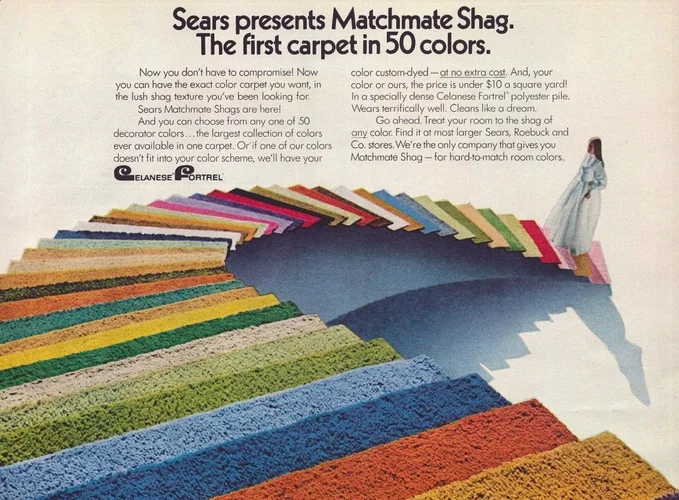
Walking barefoot across a freshly vacuumed shag carpet was once the height of luxury in American homes. These deep-pile carpets came in vibrant oranges, avocado greens, and sunshine yellows, turning floors into statements rather than surfaces to walk on. Suburban homeowners would proudly show off their wall-to-wall installations, often coordinating with matching drapes or furniture upholstery. Apartment Therapy recounts the colorful history of shag carpeting, along with hints of a comeback in recent years.
Maintaining these plush floor coverings became something of a national pastime, with special rakes designed specifically for keeping the shag looking fresh and full. The ultimate status symbol was extending that shag carpeting beyond the living room, with many homes featuring it in unexpected places like bathrooms and even kitchens. The cleaning nightmares this created would eventually contribute to the style’s demise, but not before it had become synonymous with 1970s domestic comfort.
2. Wood Paneling Everywhere
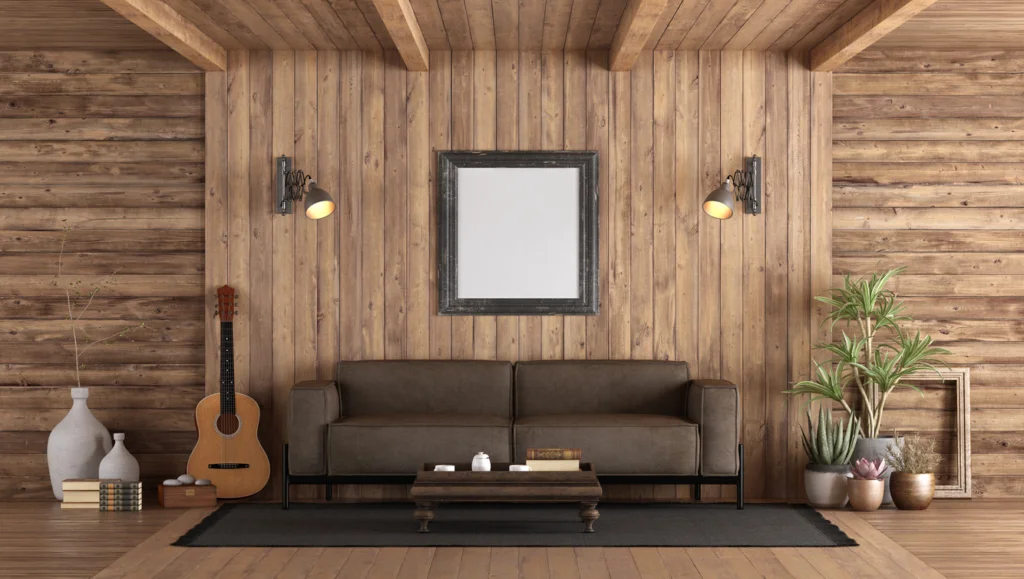
Nothing said “sophisticated den” quite like dark wood paneling covering every possible wall surface. This ubiquitous design choice transformed ordinary suburban homes into what we thought resembled cozy hunting lodges or executive offices. Homeowners embraced these panels in basements, living rooms, and even ceilings, creating environments that felt permanently set to “evening” regardless of the time of day. George Panel also reminds us that the general trend of wood paneling comes with a lot of iterations catered to everyone’s taste.
The introduction of affordable wood-look paneling meant that middle-class families could achieve this look without breaking the bank on actual hardwood. Those fake wood sheets became the backdrop for countless family photos, cocktail parties, and informal gatherings around the console television. When paired with the era’s heavy wooden furniture, the effect could be almost cave-like—a stark contrast to today’s bright, airy design sensibilities.
3. Sunken Living Rooms

The conversation pit or sunken living room represented the pinnacle of 1970s architectural innovation in new home construction. These lowered seating areas, often surrounded by just one or two steps, created a natural gathering place that felt both intimate and theatrical at the same time. Family and friends would arrange themselves on the built-in seating that typically formed a U or complete circle, creating the perfect environment for sharing stories or watching “The Mary Tyler Moore Show.” Apartment Therapy writes that although this design choice was once beloved, they haven’t quite returned with the same certainty as other ’70s trends.
The psychology behind these architectural features was all about creating connection in an increasingly disconnected world. Homeowners would accent these spaces with plush cushions, shag carpeting (of course), and often a central coffee table that might contain hidden storage or even a built-in ice bucket for entertaining. The sunken living room’s decline coincided with growing safety concerns about unexpected steps and accessibility issues, but for a glorious decade, they were the epitome of sophisticated home design.
4. Avocado Green Appliances
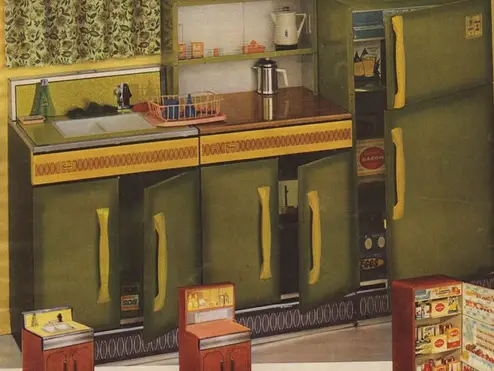
The kitchen revolution of the 1970s arrived in the form of colorful appliances that made previous generations’ white goods look positively boring by comparison. Avocado green refrigerators, stoves, and dishwashers became the must-have items for the modern kitchen, often complemented by matching countertops and backsplashes. Homemakers proudly showed off these colored appliances as statements of forward-thinking design sensibility, rather than hiding them away as purely functional items.
These green machines frequently appeared alongside their equally popular cousins in harvest gold and coppertone brown, creating kitchen color schemes that would be unthinkable today. The trend was so pervasive that even small appliances like toasters and blenders came in these signature colors, creating a coordinated look from the refrigerator down to the electric can opener. When manufacturers finally shifted back toward white and eventually stainless steel, countless avocado appliances continued working faithfully for decades, a testament to both their durability and their owners’ attachment to the distinctive look.
5. Macramé Hanging Everything
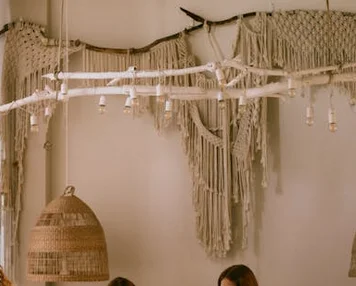
If something could be hung from the ceiling in the 1970s, someone figured out how to suspend it in a macramé hanger. These hand-knotted creations supported everything from potted spider plants to decorative glass balls, bringing natural texture and bohemian flair to suburban homes across America. Department stores sold ready-made versions, but crafty homeowners often made their own, attending classes at community centers or learning from illustrated guides in women’s magazines.
The hanging planter represented the perfect intersection of the decade’s fascination with houseplants and handcrafted items. These jute or cotton rope creations dangled from ceilings, doorways, and even specially installed hooks that were placed specifically for macramé displays. The complexity of the knots often signaled the maker’s dedication to the craft, with the most elaborate pieces featuring wooden beads, multiple tiers, or intricate patterns that took hours of patient work to complete.
6. Bean Bag Chairs and Papasan Thrones
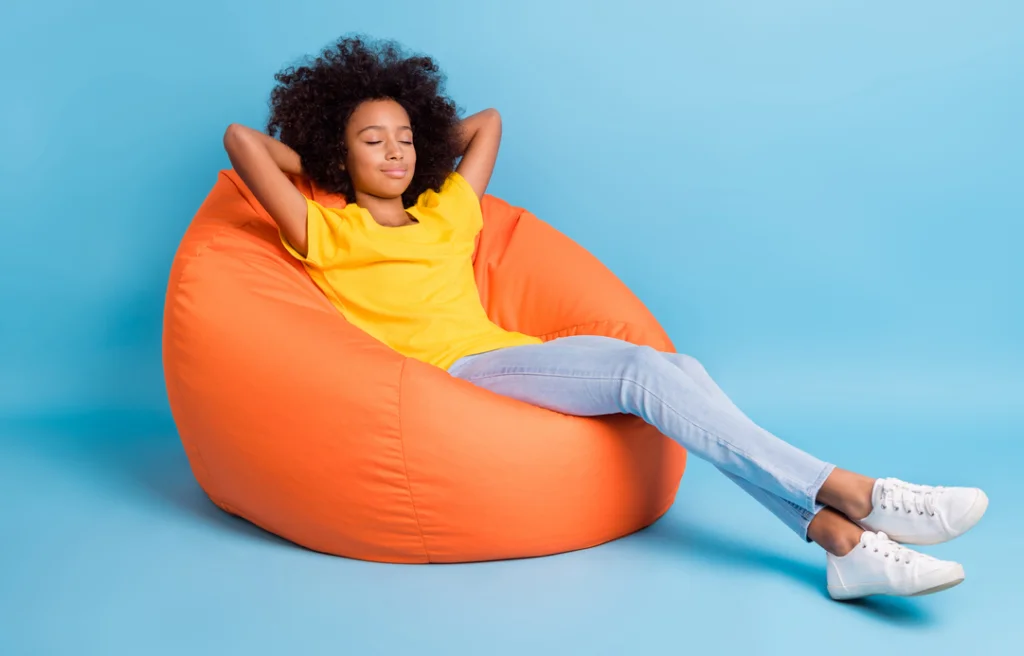
Conventional furniture took a backseat as homes welcomed slouchy, unconventional seating options that prioritized comfort and casual living. Bean bag chairs in vinyl or corduroy fabric became the preferred seating for teenagers and young adults who embraced their formless comfort for listening to records or watching television. Paired with their wicker cousins—the bowl-shaped papasan chairs with their thick round cushions—these seating options signaled a home that valued relaxation over formality.
The appeal of these unconventional chairs lay in their adjustability and the way they conformed to the sitter’s body, creating a personalized comfort experience. Progressive homes might feature an entire conversation area composed of these alternative seating options, particularly in recreation rooms or areas designated for younger family members. The inevitable leaking of bean bag filling and the dust-collecting properties of papasan cushions would eventually diminish their appeal, but not before they had become icons of 1970s casual living.
7. Mirrored Walls and Ceilings
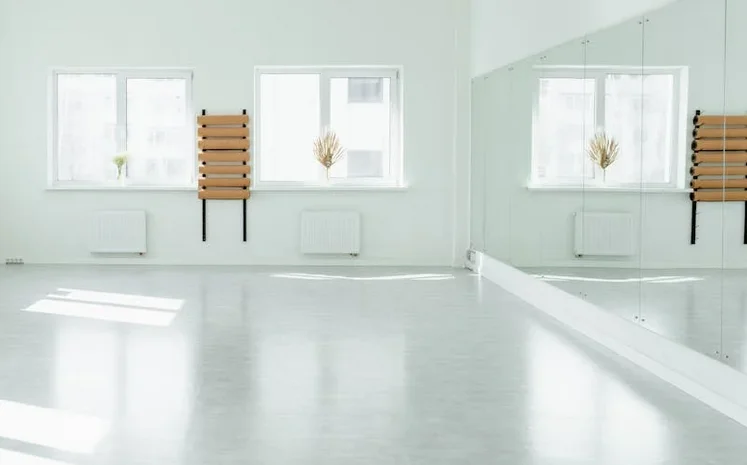
Reflective surfaces reached unprecedented popularity as homeowners installed floor-to-ceiling mirrors to create the illusion of larger spaces. These mirrored panels transformed ordinary bedrooms and living rooms into what seemed at the time like luxury disco-inspired spaces. The mirrors often featured a smoky tint or decorative etching, elevating them from purely functional items to design elements that defined a room’s atmosphere.
Dancing at home became a whole new experience when you could watch yourself moving across the living room in your best polyester outfit. Ceiling installations created particularly dramatic effects, though they prompted endless jokes about activities best conducted in private. The cleaning challenges and eventual association with certain adult entertainment venues would eventually push mirrored interiors out of favor, but for a magnificent decade, they represented the height of sophisticated home design.
8. Lava Lamps and Mood Lighting
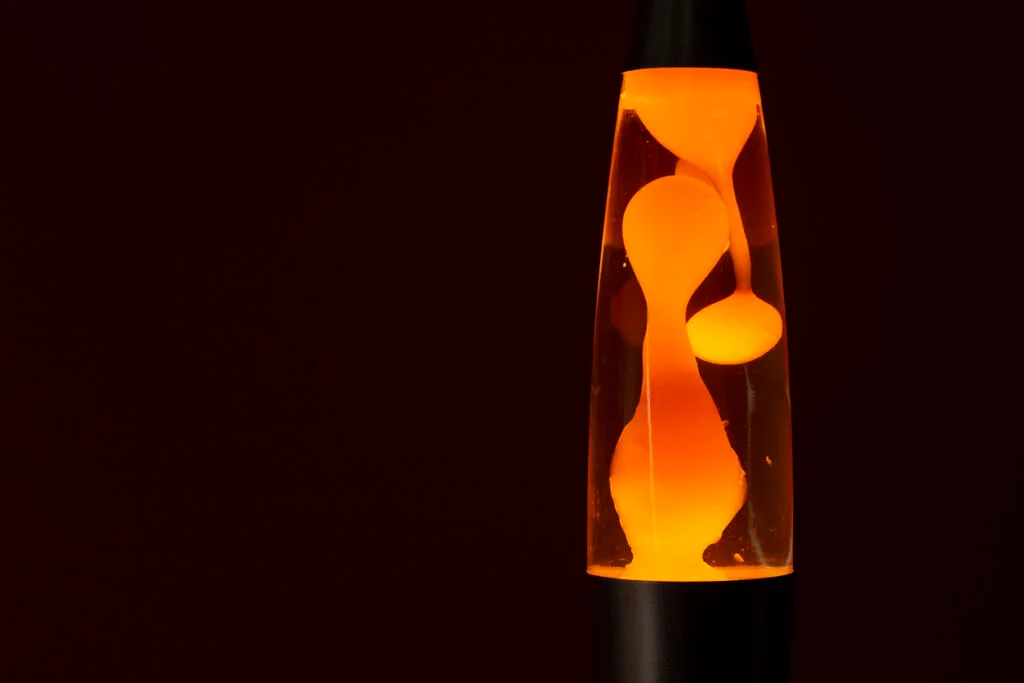
Lighting took on new importance as functional illumination gave way to ambiance creators and conversation pieces. The iconic lava lamp became the must-have accessory for dens and bedrooms, with its slowly morphing colored blobs creating a hypnotic display that could captivate guests for hours. These were joined by fiber optic lamps, black lights with fluorescent posters, and color wheels that projected changing hues across white walls.
Light fixtures themselves became sculptural elements rather than mere utilities, with swag lamps featuring dangling glass globes or elaborate plastic forms. Dimmer switches gained popularity as homeowners sought to control the mood of a room without resorting to candles or complete darkness. The cumulative effect transformed ordinary rooms into spaces that felt alive and dynamic, changing character as different lighting elements were activated or adjusted throughout the evening.
9. Orange, Brown, and Yellow Color Schemes
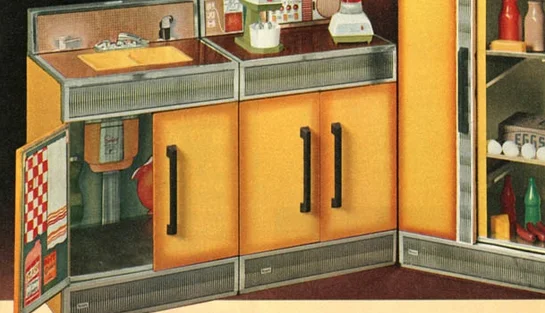
The palette of the 1970s home embodied the earth-tone revolution, with oranges, browns, and yellows dominating everything from bath towels to kitchen canisters. These colors represented a dramatic swing away from the pastels of the 1950s and the psychedelic brights of the late 1960s. Designers and homemakers embraced these warm tones as sophisticated and natural, creating spaces that felt grounded and organic.
Combining these colors created the distinctive look we now instantly recognize as “seventies”—burnt orange sofas with mustard yellow pillows, set against chocolate brown walls. Pattern played an important role too, with geometric designs and nature-inspired motifs appearing on wallpaper, upholstery, and drapery. The boldness of these color choices meant that when decorating trends shifted toward blues and mauves in the 1980s, these distinctively 1970s rooms required complete overhauls rather than simple updates.
10. Houseplants Gone Wild
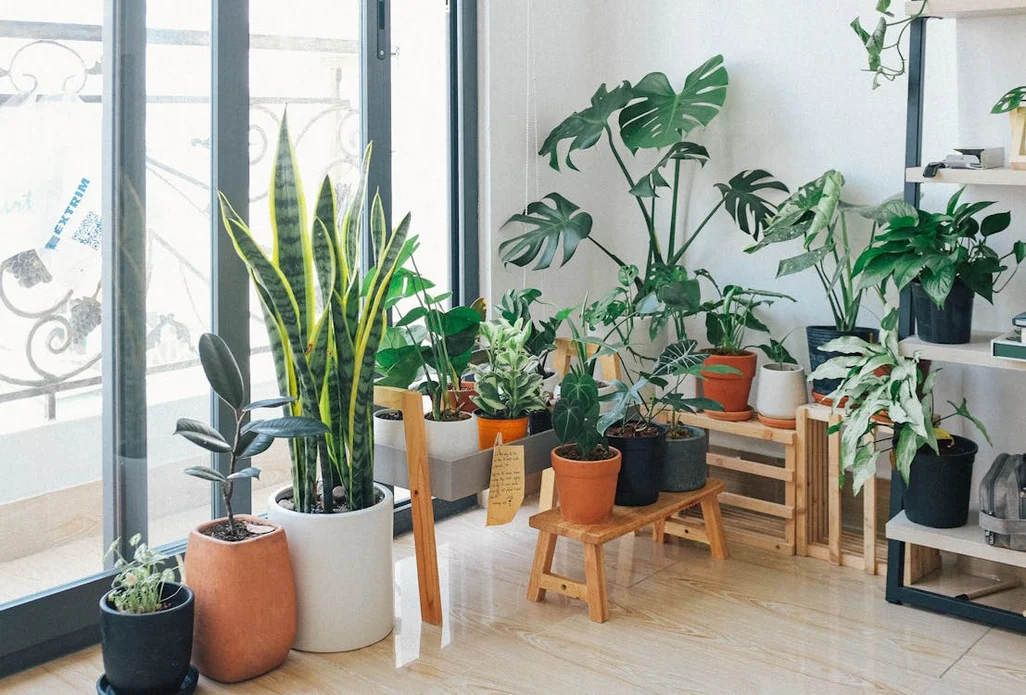
Indoor gardening reached new heights as homes transformed into veritable jungles of potted greenery. Spider plants, Boston ferns, and the virtually indestructible mother-in-law’s tongue became standard features in living rooms across America. The number and size of houseplants often signaled the homeowner’s dedication to creating a natural oasis, with some enthusiasts dedicating entire corners to multi-tiered plant displays.
Care guides for these botanical roommates became bestsellers, and garden centers expanded their indoor plant sections to meet growing demand. The trend connected to the decade’s environmental awareness and back-to-nature movements, bringing literal life into homes that were increasingly filled with synthetic materials. Those massive floor-standing specimens in heavy ceramic pots required significant commitment—both in maintenance and in living space allocation—representing a decorating choice that was as much lifestyle statement as aesthetic decision.
11. Wicker and Rattan Everything
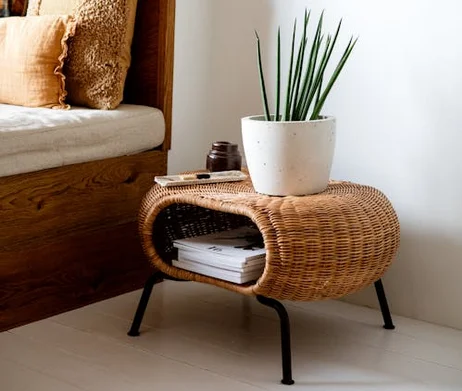
Natural materials took center stage as wicker and rattan furniture moved from the porch into every room of the house. Headboards, coffee tables, shelving units, and even full dining sets featured these woven materials, bringing texture and a tropical resort feeling to suburban homes. The peacock chair, with its dramatic fan-shaped back, became particularly iconic—the perfect throne for family photographs or enjoying a Tom Collins on a summer evening.
These natural pieces often remained in their original state, though some homeowners painted them white for a more contemporary look. The distinctive creaking sound of someone settling into a wicker chair became part of the sensory experience of visiting homes during this era. While ultimately vulnerable to humidity, dryness, and active children, these pieces represented the decade’s rejection of the sleek, space-age materials that had dominated the previous era.
12. Conversation Pits Around Fireplaces
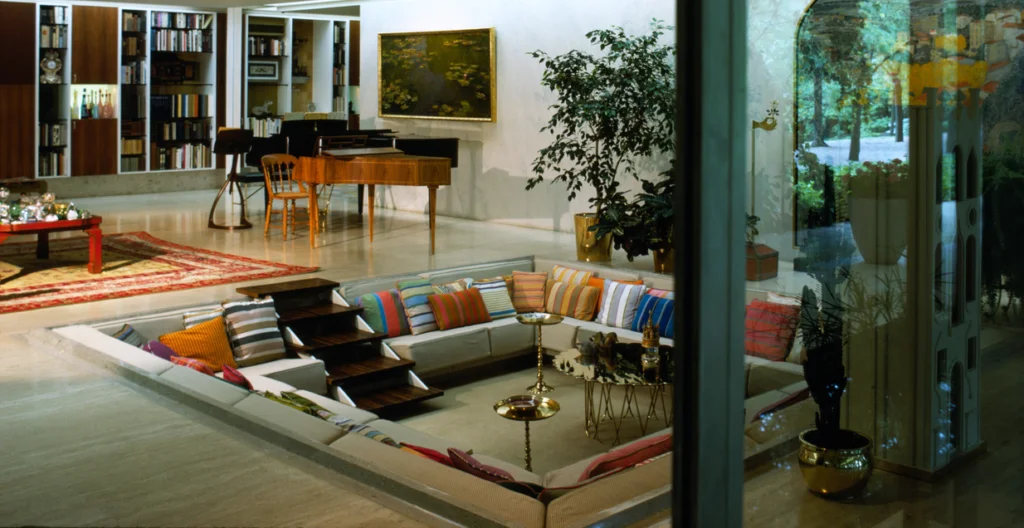
The fireplace evolved from a heating necessity to the dramatic focal point around which entire rooms were arranged. Stone or brick fireplace walls often extended all the way to vaulted ceilings, dominating the visual space and anchoring conversation areas. Raised hearths provided additional casual seating, while built-in woodboxes showcased the homeowner’s preparation for cozy evenings around the flames.
These architectural features frequently incorporated textured surfaces like rough-hewn stone or clinker brick, adding tactile elements to rooms already rich with fabrics and patterns. Gas-powered versions gained popularity as they eliminated the need for chimney cleaning and wood storage, though purists insisted that the authentic crackling and smoky scent of real logs were irreplaceable. The fireplace’s evolution into entertainment center—with television sets often placed nearby or eventually above—signaled the transition toward our current media-focused living spaces.
13. Waterbeds and Round Mattresses
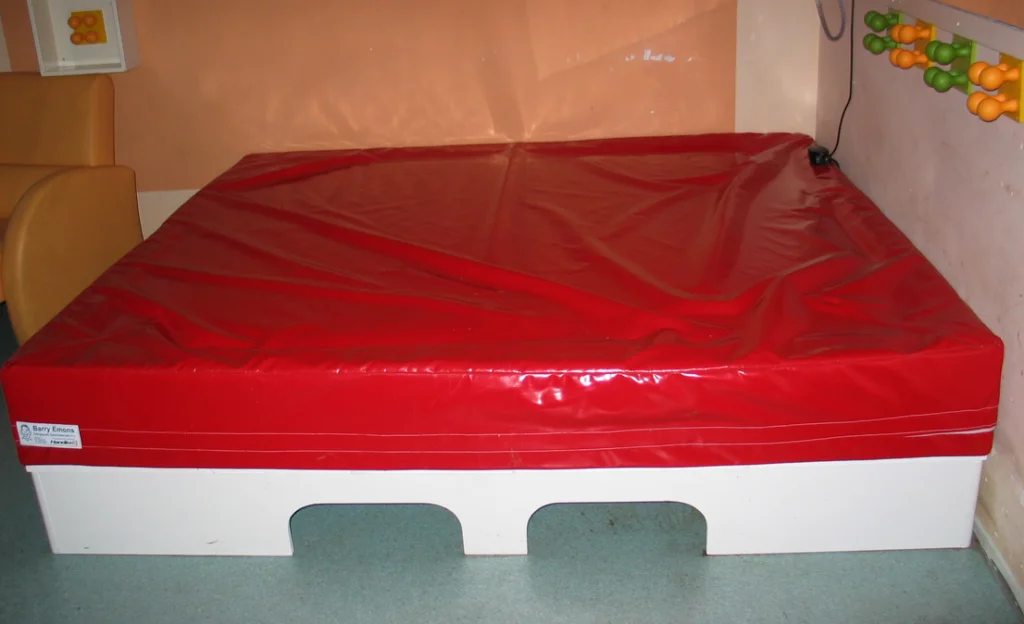
Bedroom furniture underwent a revolution as conventional mattresses gave way to more adventurous sleeping surfaces. Waterbeds became the ultimate statement piece, requiring special frames and heating elements but rewarding owners with what was marketed as the perfect sleeping experience. The gentle rocking motion was touted as therapeutic, though the reality of seasickness and catastrophic leaks was rarely mentioned in promotional materials.
For those seeking something different but less maintenance-intensive, round mattresses offered an unconventional alternative that promised to transform ordinary bedrooms into something worthy of a magazine spread. The challenges of finding fitted sheets for these circular mattresses was a small price to pay for such a conversation-starting piece of furniture. Both options eventually faded from popularity as concerns about practical matters like durability, moving difficulty, and compatibility with standard bedroom sets reasserted themselves.
The home decor trends of the 1970s may seem outlandish by today’s standards, but they represented a genuine desire to create personalized, comfortable spaces that rejected the constraints of previous generations. As we’ve cycled through minimalism, farmhouse chic, and mid-century modern revivals, certain elements of 70s design have made surprising comebacks—macramé has returned to trendy boutiques, and houseplants once again dominate Instagram feeds. Perhaps the lesson is that authentic self-expression in home decor never truly goes out of style, even if we’re grateful that avocado appliances and wall-to-wall shag carpeting remain firmly in our nostalgic past.


